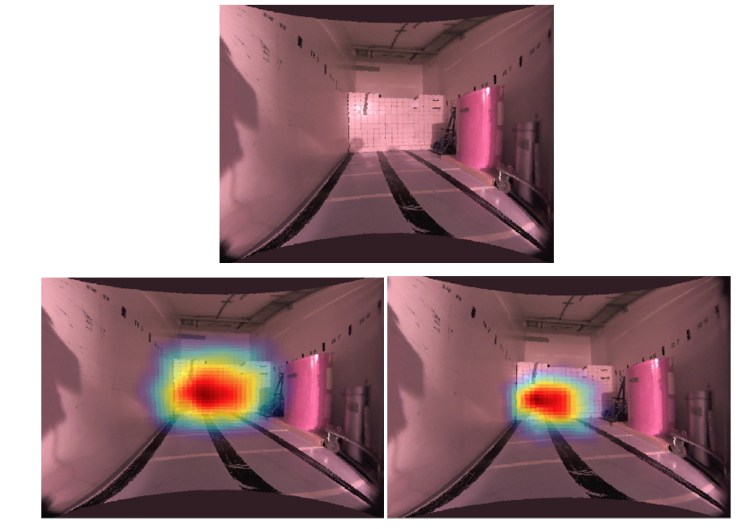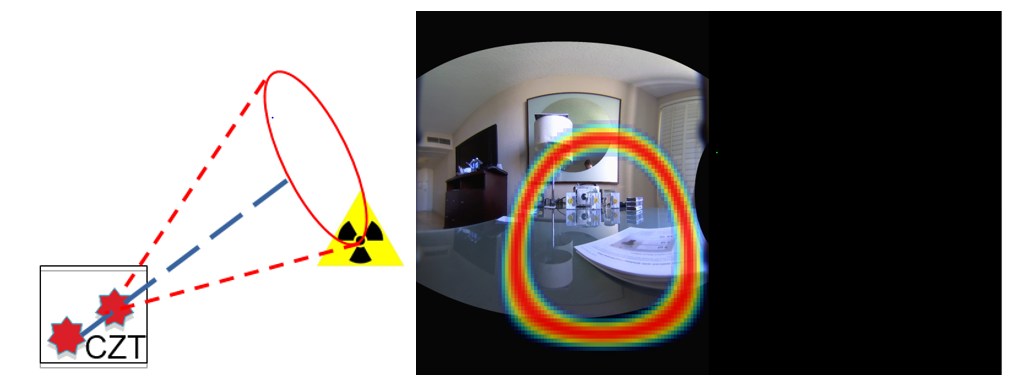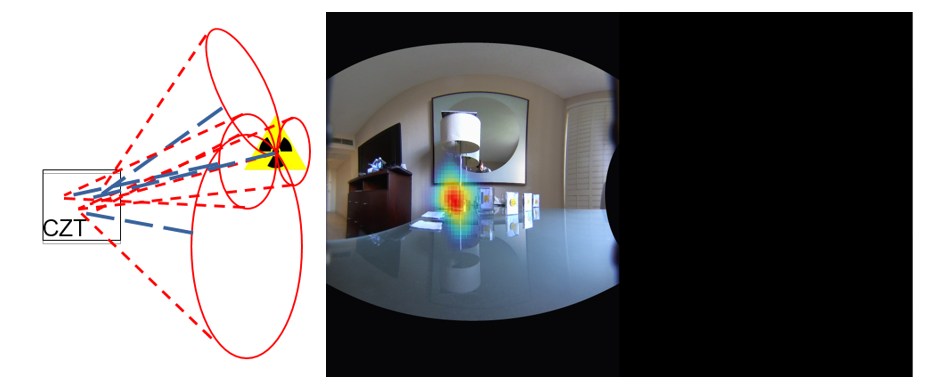Why Energy Resolution Matters - Part II
Last time, we talked about how energy resolution is critical for detecting, identifying, and quantifying isotopes. But, energy resolution is also crucial for imaging. Today, we'll take a look at imaging and energy resolution.
Before we consider the problem directly, let's consider another imaging problem: colorizing old films. Because the films were only in black and white, it is impossible to tell what color things were. Was the actress wearing a red dress or a gray dress? An even worse problem is if two nearby colors had the same saturation, both will appear the same gray in the film. For instance, a green and yellow pattern might appear uniformly gray. There is no way to restore the colors. This is a real problem for those who colorize old films and photographs.

For instance, although each balloon is a completely different color in the image above, they all look similar when viewed in black and white. This is a direct analogue to gamma-ray imaging when we are trying to image in the real world.
Outside of a perfect lab environment, there are always some background gamma rays coming from directions other than the source of interest, but usually at other energies. If we try to image with a detector that can only see in black and white - a detector with poor energy resolution - both source and background gamma rays will look the same and we will only see a large field of gray. We need a color camera - a detector with good energy resolution - to differentiate the energy (color) of the gamma rays and see the source separately from the background. The better we can distinguish direct gamma rays (with a very precise energy) and gamma rays from other sources or scattered gamma rays (with a continuum of energies, possibly even overlapping the peak), the cleaner the image can be.
For instance, imagine trying to image Cs-137 (662-keV emission) while a reactor is running and producing a lot of N-16 (6.1-MeV emission). These high-energy N-16 gamma rays usually scatter off other objects, creating a large continuum of gamma-ray energies and directions. Therefore, many of the events observed in the detector near Cs-137's 662-keV line are actually down-scattered 6.1-MeV gamma rays. Unless we are able to concentrate precisely on gamma rays of exactly 662 keV, the contribution from the N-16 scatter will quickly swamp the real signal, giving at best just an image of scattering materials around the detector. One needs excellent energy resolution to discriminate gamma rays from the Cs-137 source.
Another example is trying to image an object containing Cs-137 when a hot shielded Co-60 is nearby. Since many of the Co-60 gamma rays will be scattered in the shield, the energy window around Cs-137's lower-energy peak will include many gamma rays scattered from Co-60. If the energy resolution is not excellent, we will see the direction of scattered Co-60 much stronger than the direct Cs-137 emissions, which can point us in an entirely wrong direction.
The problem can even occur when imaging one isotope. For instance, this measurement of a shielded Cs-137 source:

If we image all energies, we get the left image, where we see not just the direct emissions from the source, but scattered gamma rays from the shield. This tells us where dose is coming from. Although sometimes useful, it will not help us recognize the root cause of the dose. Many other gamma cameras on the market will merely show you this. But, if we look at just the direct emissions from a tight energy window around the Cs-137 emission line in the second picture, we can see that the source is behind the lower-left corner of the shield. If this were contamination, we would know what area needs cleaning.
Besides discriminating source gamma rays from interfering gamma rays, good energy resolution can help produce clearer images. In Compton cameras, like the H series, each gamma ray that is captured completely gives us a little morsel of information about its original trajectory - just a set of directions on the surface of a cone centered on the detector, as in the figure below.

But this, of course, is not exactly what we want. We want to know where the source(s) are. So, we need to collect many events - each adding a morsel more information - so that together they can form an image of the scene.

With enough events from the source, we settle down on the source distribution.
Energy resolution is important here because the precision of the cone's angle is directly related to the energy resolution of the recorded interactions. That is, the better the energy resolution, the less random "wobble" is introduced into each cone. Since we know each cone better when there is better energy resolution, the images can be sharper, and good images can be created with fewer events.
So, there you have it: Not only do you need energy resolution for analysis of the spectrum, but it is critical for imaging, especially when you step out of the low-background lab. It's all about being able to concentrate those weak signals.
Signup to receive future updates about H3D and our products here.